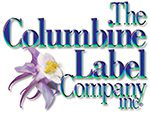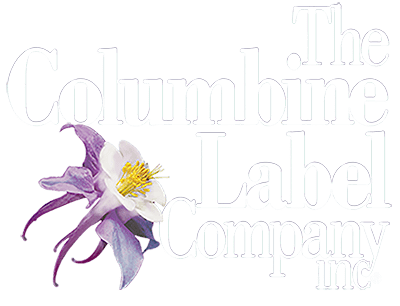In the competitive landscape of small businesses and startups, every penny counts. When it comes to product packaging, custom labels play a crucial role in branding and attracting customers. However, achieving an appealing and professional label on a budget requires strategic decisions and a keen understanding of cost-saving options. In this blog post, we’ll explore various tips for small businesses and startups to create cost-effective labels, including insights into substrate choices, the impact of printing techniques, and additional processes that can affect the overall price.
Choosing the Right Substrate: BOPP to Vinyl
BOPP (Biaxially Oriented Polypropylene): The Budget-Friendly Option
BOPP is an economical choice for label substrates, offering durability and water resistance. It’s a cost-effective alternative that provides a clean, professional look for products without breaking the bank. While it might lack the luxurious feel of more expensive materials, BOPP is an excellent choice for labels on a tight budget. Additionally, just because it is comparatively inexpensive, does not mean that it is a low quality option. At Columbine Label the vast majority of customers opt for this option for many reasons, only one being its cost effectiveness.
Vinyl and Wine Stocks: Investing for Impact
While BOPP is a cost-effective option, some industries benefit from the premium feel of vinyl or wine stocks. Vinyl labels are known for their durability and weather resistance, making them ideal for products that will be exposed to the elements. Wine stocks, with their textured and elegant appearance, add a touch of sophistication to wine bottles. While these options are pricier, they can enhance the perceived value of the product and justify the investment for certain businesses. In this blog we only touch on a handful of materials, but there are many label options available. A label expert can guide you to the right choice for your business.
Silver (Chrome) Material: A Budget Substitute for Hot Stamp (Foil Stamp) Labels
Hot stamp labels, known for their metallic and luxurious finish, can be expensive. However, small businesses and startups can achieve a similar effect without the high cost by opting for labels printed on silver (chrome) material. This material mimics the look of hot stamp labels, providing a sleek and reflective surface that catches the eye without the premium price tag.
Understanding Printing Techniques: Impact on Cost
Number of Inks: Simplify for Savings
The number of inks used in label printing directly affects the cost. While full-color labels may be visually appealing, they can be costly. Consider simplifying the design to use fewer inks. Two-color or even single-color designs can be just as impactful, especially when strategic choices are made regarding color selection.
Typically, one color designs are the cheapest, followed by two color. Three color process is called EPM (enhanced productivity mode) this color strategy uses cyan, yellow, and magenta to create black. While EPM is more cost effective, it does not have the same rich black that you would get from process printing.
The next most cost effective and also most utilized ink strategy at Columbine Label is called process printing. Process printing is a combination of cyan, yellow, magenta, and black. This color combination comes together to create more than 16,000 different colors. Some shades of blue, red, green, and brown can sometimes be challenging to hit with an exact color match using process printing. A label expert will know, based on your art, if process printing is right for you or if your project will need extended gambit printing.
Extended gambit printing is cyan, yellow, magenta, black, orange, and violet. The addition of orange and violet allows for better color matching, but is more expensive than regular process printing. The most expensive color strategy is when there is a need for extended gambit printing as well as the addition of green ink, other spot colors, and/or white ink. Always remember, more doesn’t always mean better, talk to a label expert to make sure you are getting the most bang for your buck!
Spot Colors: Balance Aesthetics and Budget
Spot colors, used for specific areas of a design, can elevate the visual appeal of a label. However, using multiple spot colors can significantly increase costs. Small businesses should strike a balance between aesthetics and budget by carefully selecting a limited number of spot colors that enhance the overall design without inflating expenses.
Additional Processes: Minimize for Affordability
Certain label embellishments, such as embossing, debossing, or varnishing, can enhance the tactile and visual appeal but come at an added cost. Small businesses and startups should carefully consider whether these additional processes are essential for their products or if they can achieve a compelling design without them. Minimizing embellishments can lead to considerable cost savings.
Optimizing Label Design for Cost Efficiency
Simplicity is Key: Streamlining Designs
Complex designs with intricate details and gradients can increase printing costs. Embrace simplicity in label design by focusing on clear and concise branding elements. Clean lines and bold typography not only reduce printing expenses but also contribute to a more memorable and recognizable brand image.
Utilize White Space: Enhancing Aesthetics Without Cost
White space is not just an empty area on a label; it is a powerful design element. Strategically using white space can draw attention to key information, create a clean and modern aesthetic, and reduce the need for excessive ink coverage. This approach not only enhances the overall design but also contributes to cost efficiency.
Consider Standard Sizes: Reducing Material Waste
Choosing standard label sizes can contribute to cost savings as they often result in less material waste during the printing process. Custom sizes may require special setups and adjustments, which can incur additional costs. By working with standard sizes, small businesses can benefit from economies of scale and reduce expenses. Additionally, non standard shapes can impact the cost of your labels. Opting for a standard square, rectangle, circle, or oval, could save you on die charges. A one time die charge is assessed for special shape labels where a custom die will need to be ordered.
Exploring Economical Printing Options
Digital Printing: Ideal for Short Runs
For small businesses and startups with limited budgets, digital printing is a cost-effective option, especially for short print runs. It eliminates the need for printing plates, setup fees, and large quantities, allowing businesses to print only the labels they need at a given time.
Bulk Printing and Ordering in Advance: Capitalizing on Volume Discounts
While it may require a larger upfront investment, ordering labels in bulk can lead to significant cost savings per unit. Small businesses and startups can capitalize on volume discounts by planning ahead and ordering larger quantities, reducing the per-label cost. There may also be programs for bulk ordering or pricing breaks based on projected quantity, make sure to ask your label expert if there are any programs that may apply to you and your business. An example of this type of program is the Columbine Label beer program.
Conclusion: Affordable Labels, Unforgettable Brands
Creating cost-effective labels for small businesses and startups is not about compromising quality but making strategic choices that align with budget constraints. From choosing budget-friendly substrates like BOPP to optimizing design elements and exploring economical printing options, there are numerous ways to achieve professional-looking labels without breaking the bank. By understanding the impact of choices on cost and balancing aesthetics with affordability, small businesses can ensure their labels not only fit their budget but also contribute to building a memorable and impactful brand.


